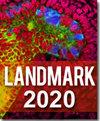Pyroptosis-Related Subtypes Predict the Response of Clear Cell Renal Cell Carcinoma to Targeted Therapy
IF 3.1
4区 生物学
Q2 Immunology and Microbiology
引用次数: 0
Abstract
Background : Pyroptosis plays a crucial role in anti-tumor immunity and in formation of the immune microenvironment. However, whether pyroptosis is involved in the progression of clear cell renal cell carcinoma (ccRCC) is still unclear. Personalized treatment of ccRCC requires detailed molecular classification to inform a specific therapy. Methods : Molecular subtyping of ccRCC was performed based on consensus clustering of pyroptosis-related genes. The characteristics of these molecular subtypes were explored at the genome, transcriptome and protein levels. Single-cell RNA sequencing and CIBERSORT analysis were used to analyse the immune microenvironment of ccRCC, while Lasso regression was used to develop a prediction model based on hub genes. Expression of the pyroptosis-related gene GSDMB was also investigated at the tissue and cellular levels. Results : Two molecular subtypes were identified based on the clustering of pyroptosis-related genes. Cluster 1 was associated with activation of classical oncogenic pathways, especially the angiogenesis pathway. Cluster 2 was associated with activation of immune-related pathways and high levels of immunosuppressive cells, exhausted CD8 + T cells, and tumor-associated fibroblast infiltration. Clusters 1 and 2 were thus defined as the angiogenic and inflamed subtypes, respectively. The two subtypes were predictive of the response of ccRCC to anti-angiogenic therapy and immunotherapy, with Cluster 1 patients benefiting from anti-angiogenic therapy and Cluster 2 patients showing better response to anti-PD1 inhibitor therapy. Furthermore, a 9-gene expression signature ( HJURP , NUF2 , KIF15 , MELK , TPX2 , PLK1 , CDCA3 , CTLA4 , FOXP3 ) was identified that could predict outcome and response to immune checkpoint blockade therapy in test cohorts. Finally, GSDMB was found to be involved in the development of renal clear cell carcinoma. Conclusions : These results on pyroptosis-related genes in ccRCC provide a theoretical basis for understanding molecular heterogeneity and for the development of individualized treatment strategies.预测透明细胞肾细胞癌对靶向治疗反应的火绒病相关亚型
背景:化脓过程在抗肿瘤免疫和免疫微环境的形成中起着至关重要的作用。然而,透明细胞肾细胞癌(ccRCC)的进展是否与化脓过程有关仍不清楚。ccRCC的个性化治疗需要详细的分子分类,以便为特定疗法提供依据。方法:根据热解相关基因的共识聚类对ccRCC进行分子亚型划分。从基因组、转录组和蛋白质水平探讨了这些分子亚型的特征。单细胞RNA测序和CIBERSORT分析被用来分析ccRCC的免疫微环境,而Lasso回归被用来开发基于枢纽基因的预测模型。此外,还在组织和细胞水平上研究了热蛋白沉积相关基因 GSDMB 的表达。结果:根据热蛋白沉积相关基因的聚类,确定了两种分子亚型。聚类 1 与经典致癌途径的激活有关,尤其是血管生成途径。聚类 2 与免疫相关途径的激活和高水平的免疫抑制细胞、CD8 + T 细胞衰竭以及肿瘤相关成纤维细胞浸润有关。因此,第 1 和第 2 组分别被定义为血管生成亚型和炎症亚型。这两种亚型可预测ccRCC对抗血管生成疗法和免疫疗法的反应,其中第1群组患者可从抗血管生成疗法中获益,而第2群组患者对抗PD1抑制剂疗法的反应更好。此外,研究还发现了9个基因表达特征(HJURP、NUF2、KIF15、MELK、TPX2、PLK1、CDCA3、CTLA4、FOXP3),它们可以预测试验队列的结局和对免疫检查点阻断疗法的反应。最后,研究发现 GSDMB 与肾透明细胞癌的发展有关。结论 :这些关于ccRCC中热变性相关基因的研究结果为了解分子异质性和制定个体化治疗策略提供了理论基础。
本文章由计算机程序翻译,如有差异,请以英文原文为准。
求助全文
约1分钟内获得全文
求助全文
来源期刊

Frontiers in Bioscience-Landmark
生物-生化与分子生物学
CiteScore
3.40
自引率
3.20%
发文量
301
审稿时长
3 months
期刊介绍:
FBL is an international peer-reviewed open access journal of biological and medical science. FBL publishes state of the art advances in any discipline in the area of biology and medicine, including biochemistry and molecular biology, parasitology, virology, immunology, epidemiology, microbiology, entomology, botany, agronomy, as well as basic medicine, preventive medicine, bioinformatics and other related topics.
 求助内容:
求助内容: 应助结果提醒方式:
应助结果提醒方式:


